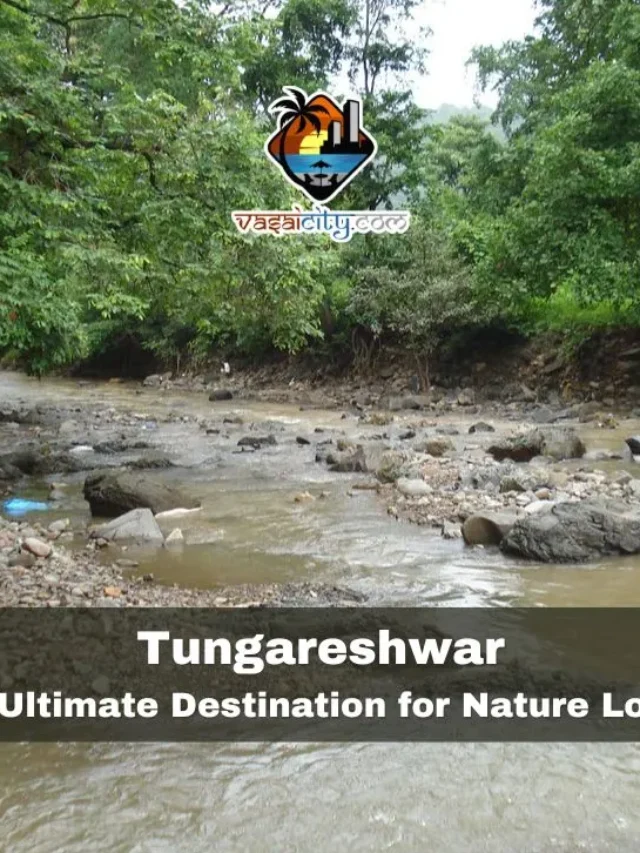A recent survey in Vasai has brought to light an expansive mangrove forest stretching across 811 hectares. This discovery has set in motion efforts to transfer the area under the jurisdiction of the Mangrove Department, with plans to protect and conserve this critical ecological treasure.
Mangroves play an essential role in maintaining the environment, especially in coastal regions like Vasai-Virar. They act as natural buffers against coastal erosion, absorb carbon dioxide, and provide habitats for a wide variety of wildlife. However, the increasing encroachment and degradation of mangroves over the years have become a growing concern for environmentalists and local authorities.
Mangroves in Vasai-Virar: A Vital Ecosystem
Vasai-Virar’s coastal landscape is dotted with mangroves and wetlands. Some of these areas currently fall under the jurisdiction of the Revenue Department. However, the Mangrove Department, created to protect and nurture these ecosystems, is now actively working to bring the Vasai mangroves under its dedicated management.
During the survey, the team identified various patches of mangroves that are rich in biodiversity. These forests serve as a safe haven for numerous animal and bird species. Despite their ecological importance, many mangrove areas in Vasai have suffered due to human activities such as illegal landfilling, sand mining, and the construction of unauthorized structures.
Alarming Increase in Mangrove Destruction
Over the past few years, Vasai-Virar has witnessed a troubling trend of mangrove destruction, with studies indicating that nearly 20% of these ecosystems have been lost to illegal encroachments and industrial activities, significantly affecting local wildlife and flood defenses. Illegal tree felling and encroachments have led to the clearing of vast areas of mangroves, primarily to make way for unauthorized buildings. Additionally, excessive sand mining and soil dumping have further degraded these ecosystems.
Environmentalists have raised alarms about the consequences of mangrove loss. The disappearance of mangroves threatens the habitat of various animal and bird species, disrupting the delicate ecological balance. They have called for urgent and effective measures to curb such activities and ensure the long-term preservation of mangroves.
The Role of the Mangrove Department
The Mangrove Department has taken on the responsibility of safeguarding these vital ecosystems. Their efforts include:
- Raising Awareness: Conducting campaigns to educate the public about the importance of mangroves.
- Restoration Projects: Undertaking initiatives to replant mangroves in degraded areas.
- Monitoring Activities: Keeping a close watch on mangrove regions to prevent illegal activities.
To strengthen conservation efforts, the Mangrove Department is working closely with the Revenue Department. By transferring mangrove areas to the Mangrove Department, officials can better focus on protection and restoration activities, including taking legal action against violators.
Legal Actions Against Encroachments
The Vasai Revenue Department has been actively cracking down on illegal encroachments in mangrove areas. In the past year, they registered 13 cases against individuals involved in such activities. These cases cover areas in Naigaon, Sasunavghar, Juchandra, Shirgaon, and Naringi. In addition, ten more complaints are currently under investigation by the Sub-Divisional Office.
The local authorities have vowed to take stringent measures to curb encroachments. They aim to not only penalize offenders but also reclaim the damaged areas and restore them to their natural state.
Moving Forward: Conservation as a Priority
The discovery of 811 hectares of mangroves has given a renewed push to conservation efforts. The Mangrove Department plans to conduct a detailed review to determine the exact boundaries of the area and identify the specific measures needed for its preservation. Proposals have already been submitted at the district level to expedite the transfer process.
In collaboration with the Revenue Department, the Mangrove Department is devising strategies to:
- Regularly monitor the mangrove zones for unauthorized activities.
- Launch community-driven initiatives to involve locals in conservation efforts.
- Ensure that any cleared mangrove areas are rehabilitated with new plantations.
The Path Ahead: Challenges and Opportunities
Protecting the mangroves in Vasai is not without challenges. Rapid urbanization and the growing demand for land in the Vasai-Virar region continue to put pressure on natural ecosystems. Striking a balance between development and environmental preservation requires collaborative efforts from government authorities, environmental organizations, and local communities.
Despite these challenges, the discovery of such a vast mangrove area presents a significant opportunity to prioritize conservation. By taking decisive action now, Vasai has the chance to set an example for other regions facing similar issues.
Why Mangroves Matter
Mangroves are more than just trees; they are lifelines for coastal communities and ecosystems. Their roots stabilize shorelines, preventing erosion and reducing the impact of storms and tsunamis. They also act as natural carbon sinks, absorbing large amounts of carbon dioxide and helping mitigate climate change. Furthermore, mangroves support marine life, serving as breeding grounds for fish and other aquatic species.
The protection and expansion of mangroves can significantly enhance biodiversity, improve air and water quality, and provide sustainable livelihoods for local communities.
A Call to Action
The discovery of 811 hectares of mangroves in Vasai underscores the need for immediate and sustained action to protect these ecosystems. The combined efforts of the Mangrove Department, Revenue Department, environmentalists, and local residents can ensure the preservation of this vital natural resource.
By prioritizing conservation over encroachment and short-term development, Vasai can safeguard its mangroves for future generations, maintaining its ecological balance and protecting the rich biodiversity that depends on these forests. The time to act is now.














